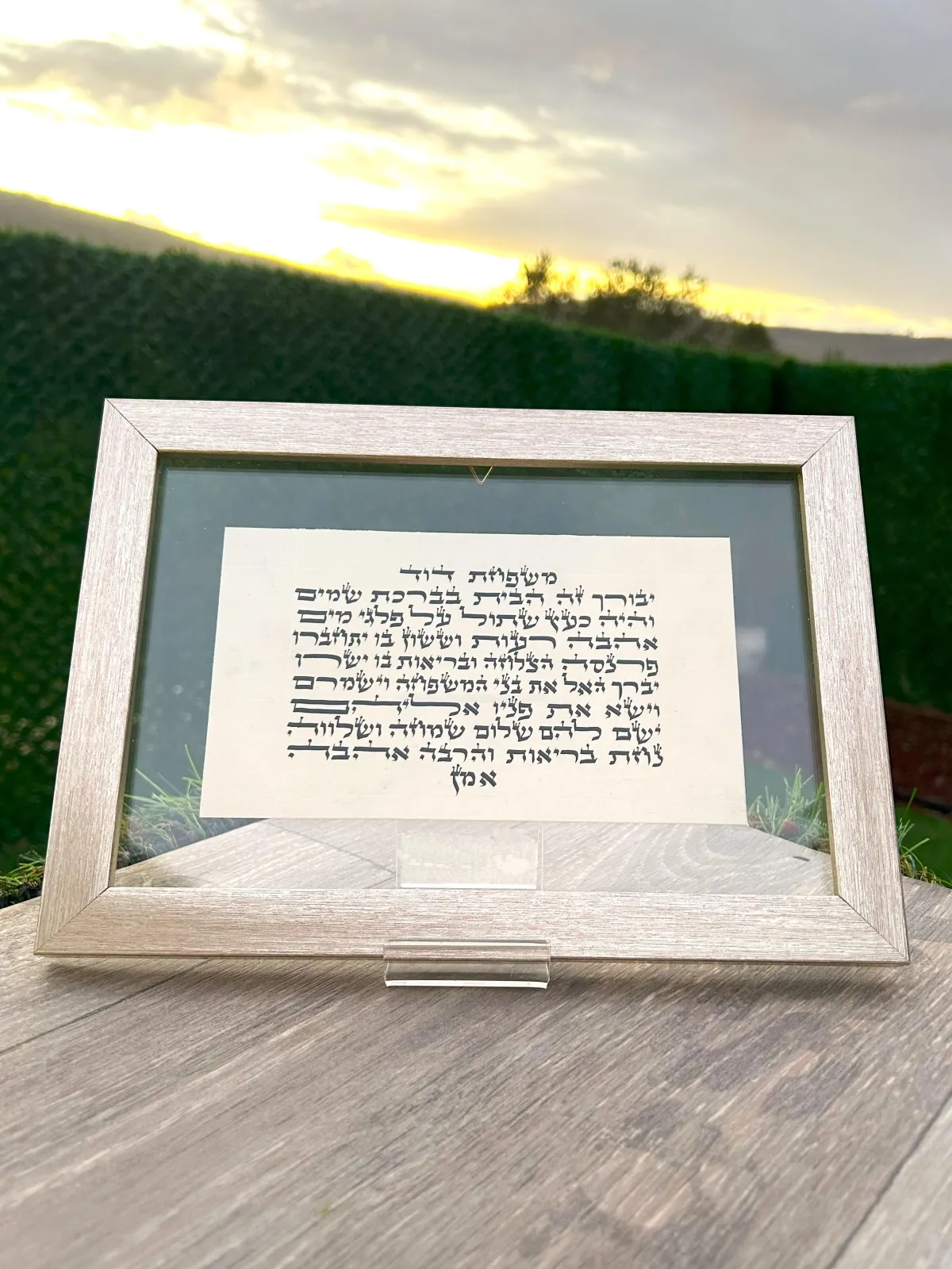
Birkat HaBayit (Blessing for the Home)
The Birkat HaBayit (בִּרְכַּת הַבַּיִת), “Blessing for the Home,” originates in the medieval period as Jewish communities sought to sanctify their living spaces. Early amuletic scrolls—often affixed above doorways—combined biblical verses (e.g.
Psalm 121:8 “The Lord shall guard your going out and your coming in”) with short supplications. By the 16th century, printed mahzorim and siddurim began including formalized texts specifically intended to be displayed in private residences, invoking peace, protection, and divine presence.
II. Text and Structure
While inscriptions vary widely, most Birkat HaBayit formulas follow a three‑fold pattern:
Invocation & Praise
“בָּרוּךְ אַתָּה ה’ אֱלֹהֵינוּ מֶלֶךְ הָעוֹלָם, שׁוֹכֵן בְּתוֹךְ הַבַּיִת הַזֶּה…”
(“Blessed are You, Lord our God, King of the universe, who dwells in this house…”)
Petition for Sanctity & Peace
“…וִיהִי בַּיִתֵנוּ מְקוֹר שָׁלוֹם וּבְרָכָה, מִלְּפָנֶיךָ יִהְיֶה פֶּרֶק צַלְמָתֶךָ וְשַׂמְחַת בְּנֵי־בָתֵּנוּ.”
(“…and let our home be a source of peace and blessing; may Your Presence rest upon it, and may our children rejoice within.”)
Aspirational Closing
“…וּבָרוּךְ אַתָּה ה’, שׁוֹמֵעַ תְּחִנוֹת בְּתוֹכֵנוּ.”
(“…and blessed are You, Lord, who hears the prayers made within our midst.”)
These elements—praise, petition, aspiration—mirror classic blessing structures and root domestic life in ongoing spiritual awareness.
History, Ritual & Mystical
Sanctifying the Mundane: By placing holy text on ordinary walls, families transformed their dwellings into micro‑sanctuaries, aware that “place” itself can bear spiritual imprint.
Communal Identity: Displaying the blessing became a visible sign of Jewish identity—particularly in diaspora communities where external markers of faith were otherwise subdued.
Folk Practice: In Eastern Europe, tradespeople and laborers often gifted a neighbor’s new home with a hand‑written Birkat HaBayit, strengthening communal bonds.
New Home Ceremony
When moving in, a mezuzah is affixed to doorposts; families then ceremonially hang the Birkat HaBayit plaque at the entrance or living‑room wall, reciting the text together.
Annual Renewal
Some households pause each Rosh Hashanah (Jewish New Year) to bless the text aloud, reaffirming the plea for peace and divine vigilance.
Housewarming Gifts
Rabbis often inscribe personalized versions—adding family names or subtle allusions to local customs—when officiating at chanukat habayit (home dedication) celebrations.
Kabbalistic Infusion: Safed mystics taught that the letters of Birkat HaBayit emit an aura of “shalom” (peace) that counters negative forces.
Mussar Emphasis: The blessing’s invocation of joy and integrity for “benei‑bateinu” (our children) underscores the ethical duty to raise the next generation in values of harmony and respect.